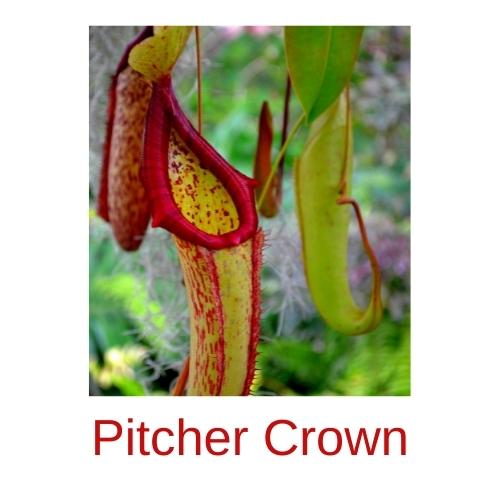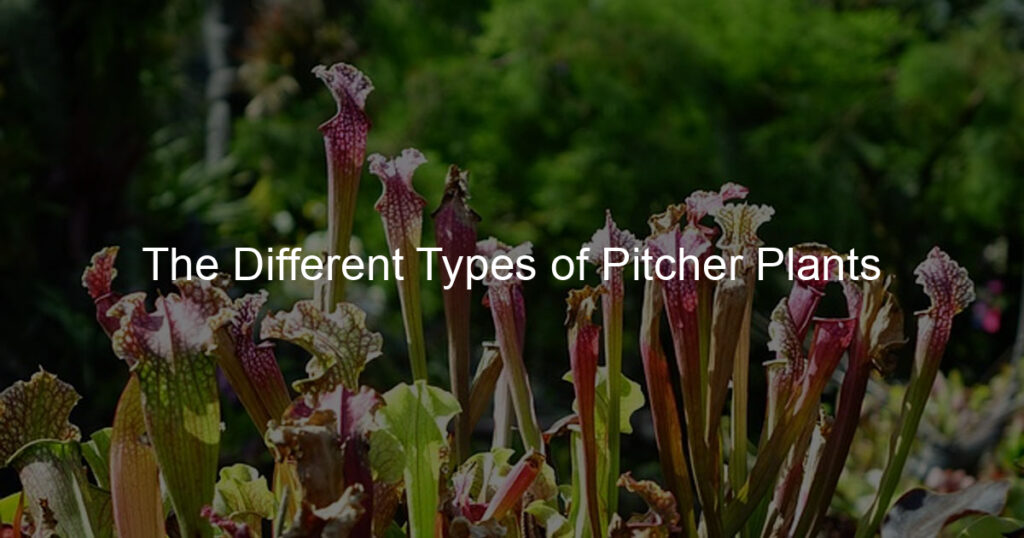If you’re a fan of pitcher plants, there’s no doubt that you’ve heard about the many different species available. From North American Sarracenias to Asian Nepenthes, these unique carnivorous plants have captivated gardeners and nature lovers alike with their curious shapes and vibrant colors.
What are the different pitcher plant types?
A pitcher plant is an incredible carnivorous plant that catches its prey with a tube-shaped structure filled with digestive enzymes. There are over 20 different species of pitcher plants, which can be broken down into two main categories: the tropical types and the temperate types.
Tropical pitcher plants, found mostly in Southeast Asia, feature lids on their pitchers and tend to be small in size with colorful exteriors. Temperate pitcher plants grow mostly in North America, usually feature roller-coaster trap shapes and form large clusters whereas the tropical ones form individual plants scattered wide apart from each other.
Both kinds have liquid nectars within their pitchers to entice insects that then become trapped by the downward plop of slippery inner walls. It’s an amazing part of nature that inspired many scientists over generations to look further into its mechanism and ecology.
How do pitcher plants differ in appearance?
The pitcher plant is a fascinating carnivorous plant that looks completely different from regular flowers and plants. Its distinct look is unique, as it sports a long tube-like structure that often curves downward.
Different species vary in size, with some being small and compact, while others are towering giants that can exceed 60 centimeters in height. They come in a range of eye-catching colors including bright green, yellowish-white, sun-kissed orange, and rusty brown with intricate patterns on the surface of their “pitchers.”
All pitcher plants have specialized digestive organs inside their impressive-looking pitchers which contain secretions to attract and capture insects or other prey for their nutrition needs.
How do pitcher plants differ in size?
Pitcher plants come in all shapes and sizes, from the teacup-sized species found in Southeast Asia to some that tower over humans at up to six feet tall! The diminutive Nepenthes peltata only grows up to one inch across, while the foot-long pitchers of Nepenthes rajah dwarf all other carnivorous plants.
Found mostly in bogs on tropical islands like Borneo and Sumatra, these massive pitcher plants add a fascinating element of biodiversity to their habitats. Many scientists believe that an increase in size has enabled these giant pitcher plants to digest larger prey than their smaller counterparts. They’re an impressive sight to behold!
What are the habitat requirements for each type of pitcher plant?
Different species of pitcher plants each have unique habitat requirements. From the lowlands of Sarracenia purpurea to the high altitude, acidic environment of Sarracenia leucophylla, the habitats for these carnivorous plants range quite a bit.
While these plants share some similar needs, from moist soil and plenty of sunlight to acidic environments, each has its special preferences as well. For example, S. purpurea grows best in sunny areas with wet sand or peat-based soil that is neutral or slightly acidic, whereas S. leucophylla needs even more intense acidity levels and strong sunlight that seems almost otherworldly coming from such high ground. Each of these distinct species demonstrates life’s ability to adjust to different conditions while showcasing natural beauty at every turn.
How do pitcher plants catch prey?
Pitcher plants have evolved an ingenious way to catch their prey. They produce pitchers – shaped like funnels with slippery inner walls – that attract passing insects. As the insect crawls down into the pitcher, its footing slips on the slimy surface, making it difficult to escape.
The lower half of the plant then secretes digestive enzymes and acids, which allow it to slowly digest the bugs until nothing is left but their exoskeletons. Not content to settle for that alone, some species of pitcher plants also secrete a sweet-smelling odor which attracts even more bugs towards them! This kind of advanced evolutionary adaptation serves as a perfect example of how nature has equipped creatures with survival skills beyond compare.
Can different types of pitcher plants be grown together?
Growing different types of pitcher plants together is a great way to bring a unique look to any garden or terrarium. These carnivorous plants come in all shapes and sizes, sporting vibrant colors and striking patterns.
By combining several of these species in the same container, you can create an attractive display that’s sure to draw attention from visitors and neighbors alike. Depending on their size and the requirements for each species, some care must be taken when attempting to grow multiple types of pitcher plants together. If done properly though, the results can be amazing!
Conclusion
After reading this post, we hope you’ve become more informed about the different types of pitcher plants. With either a jungle or a windowsill garden in your home, these carnivorous plants are perfect for adding a touch of exotic beauty to your environment. Not only that, but they provide an important deep connection with nature and educate us on the many forms and wonders of plant life.








